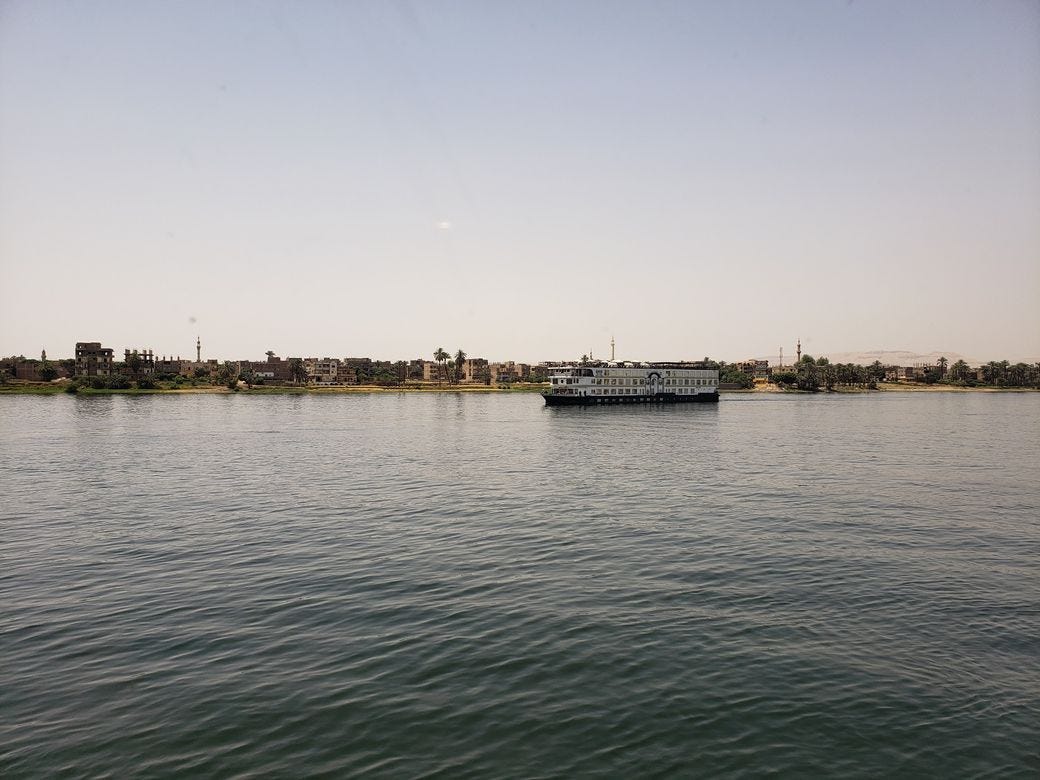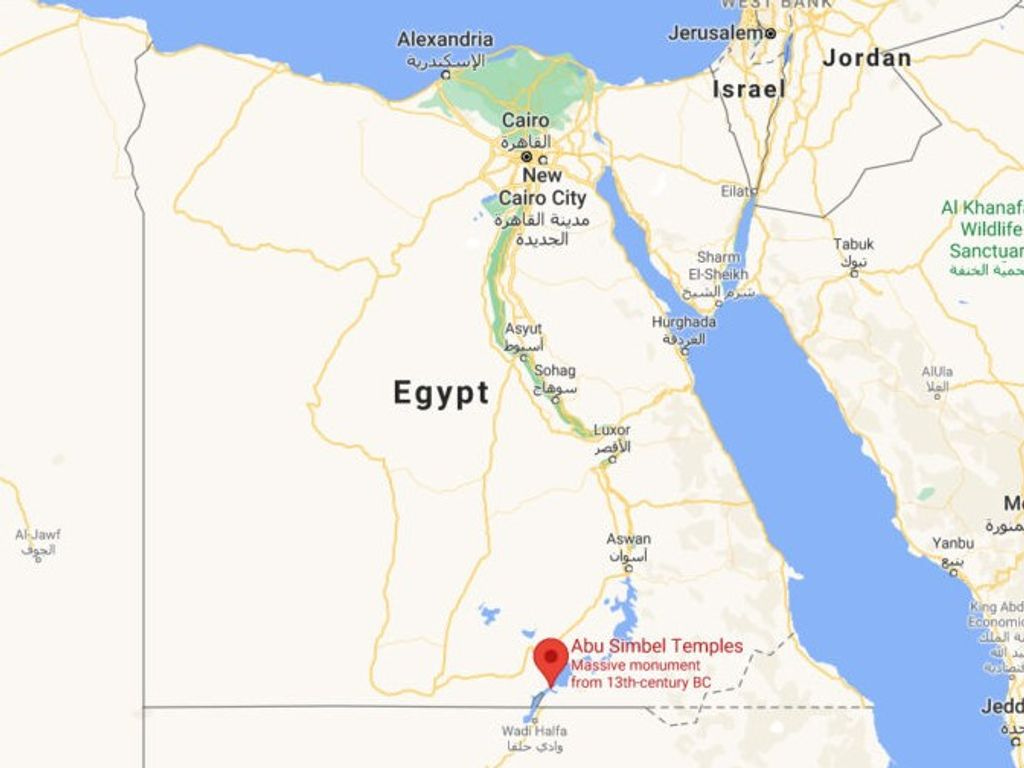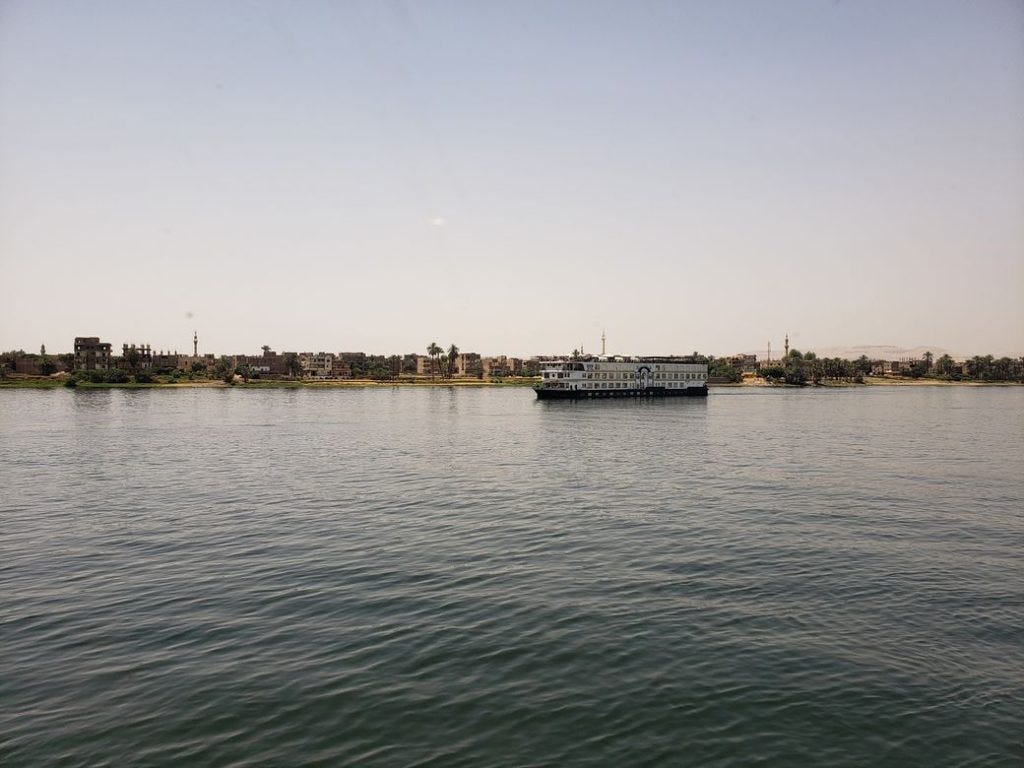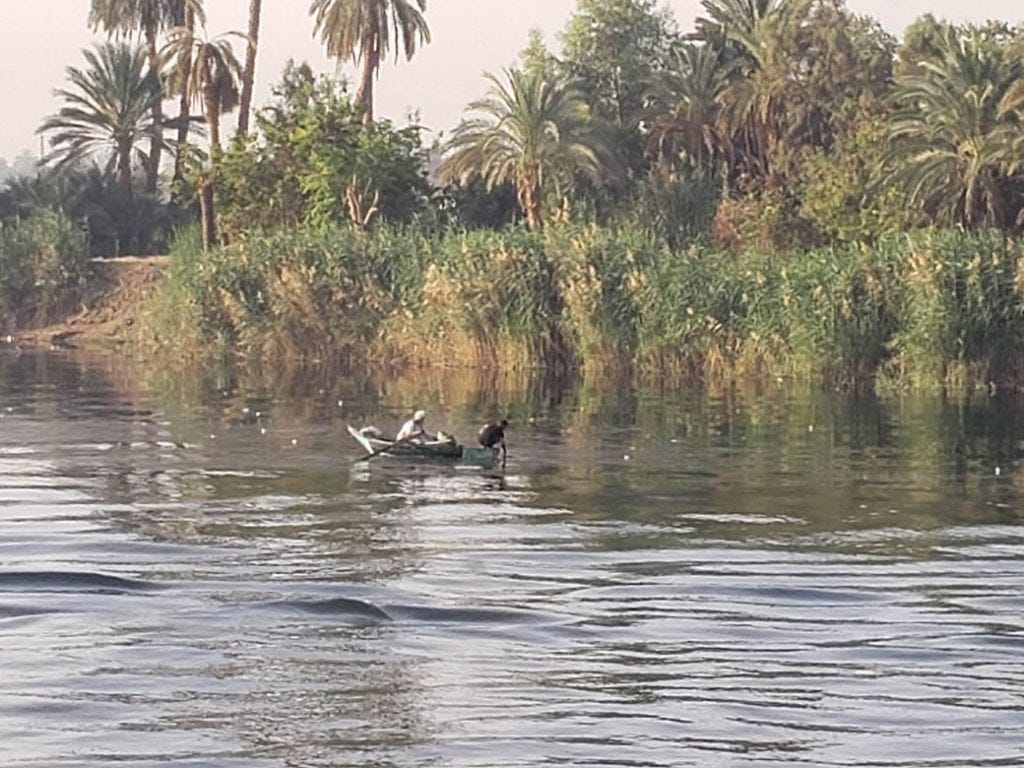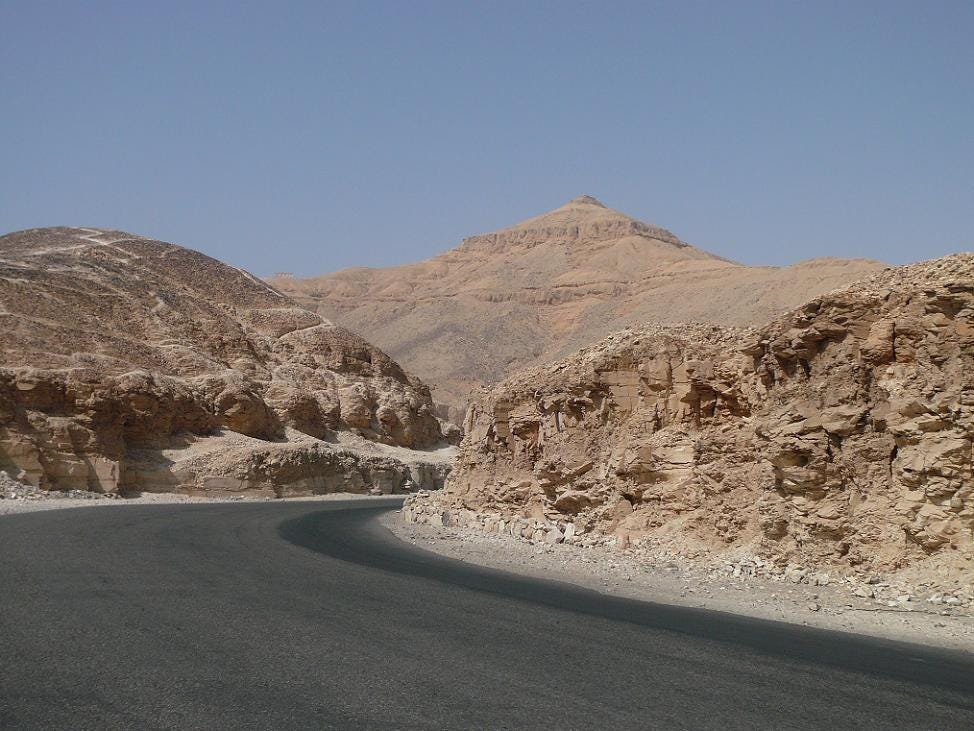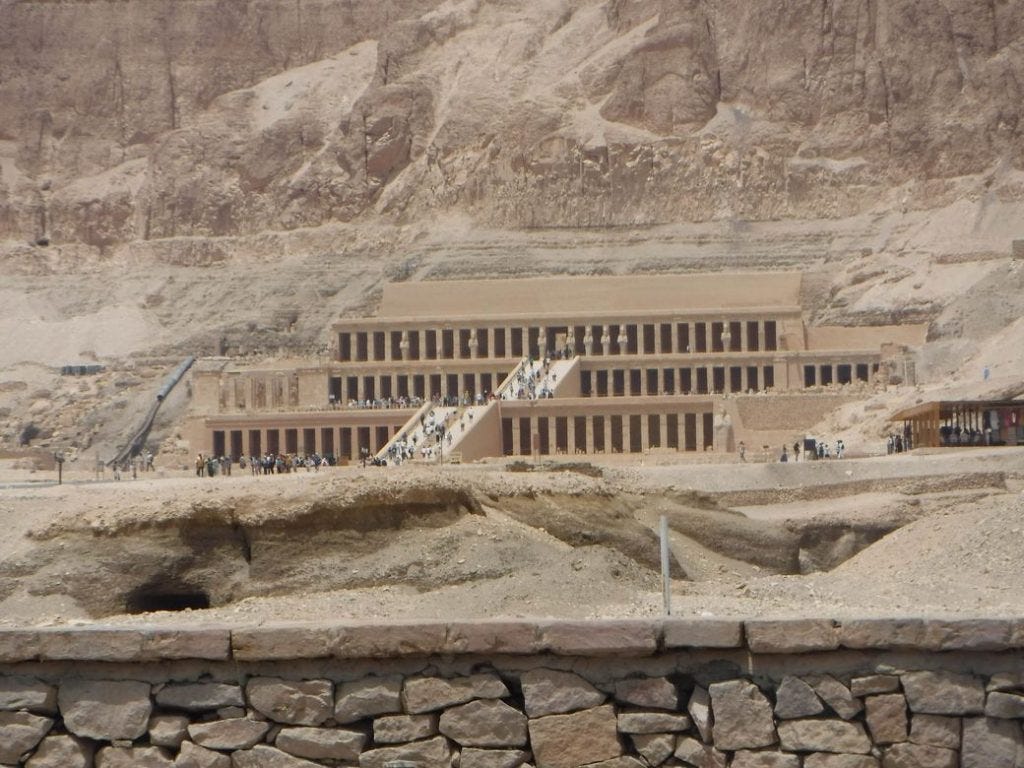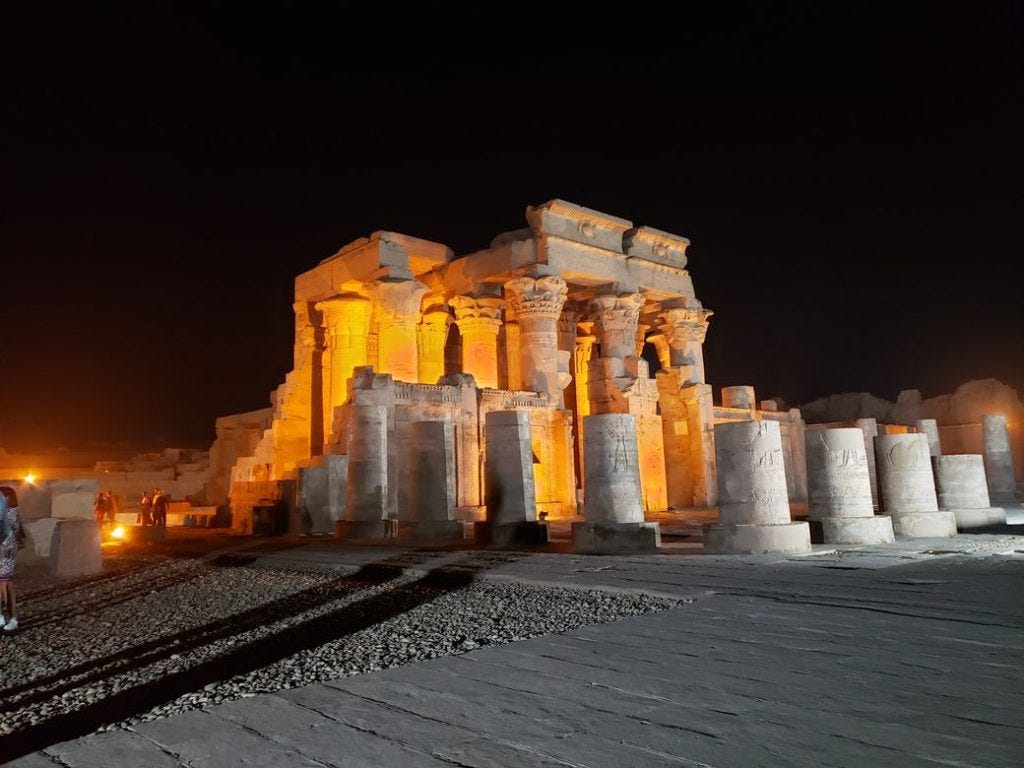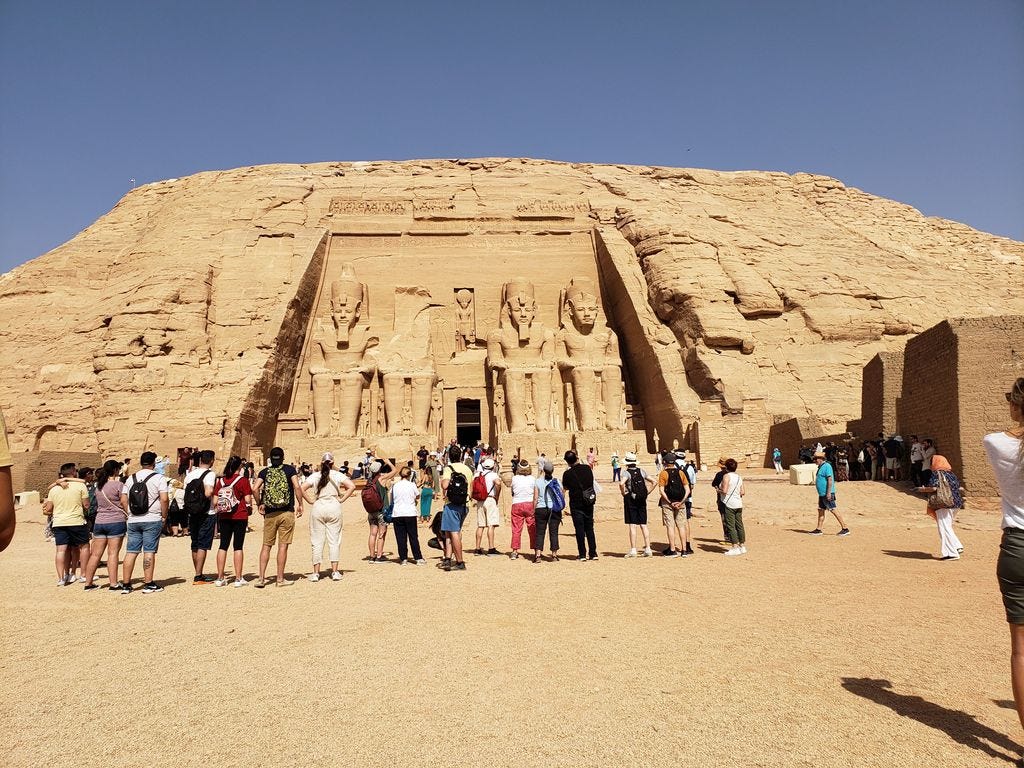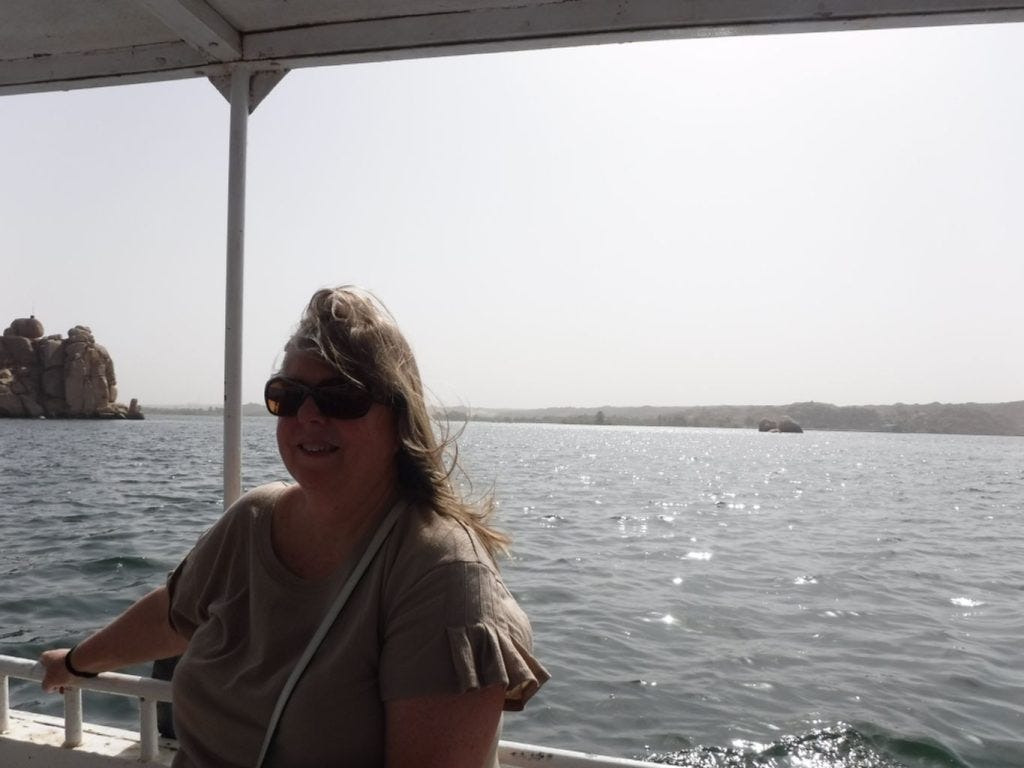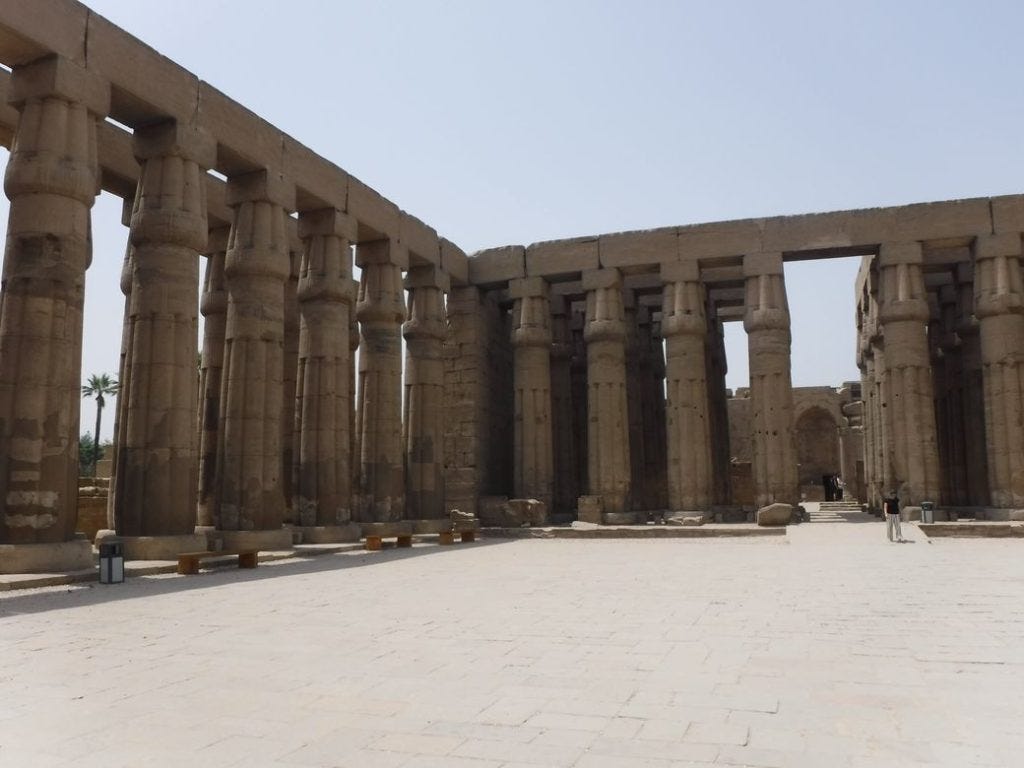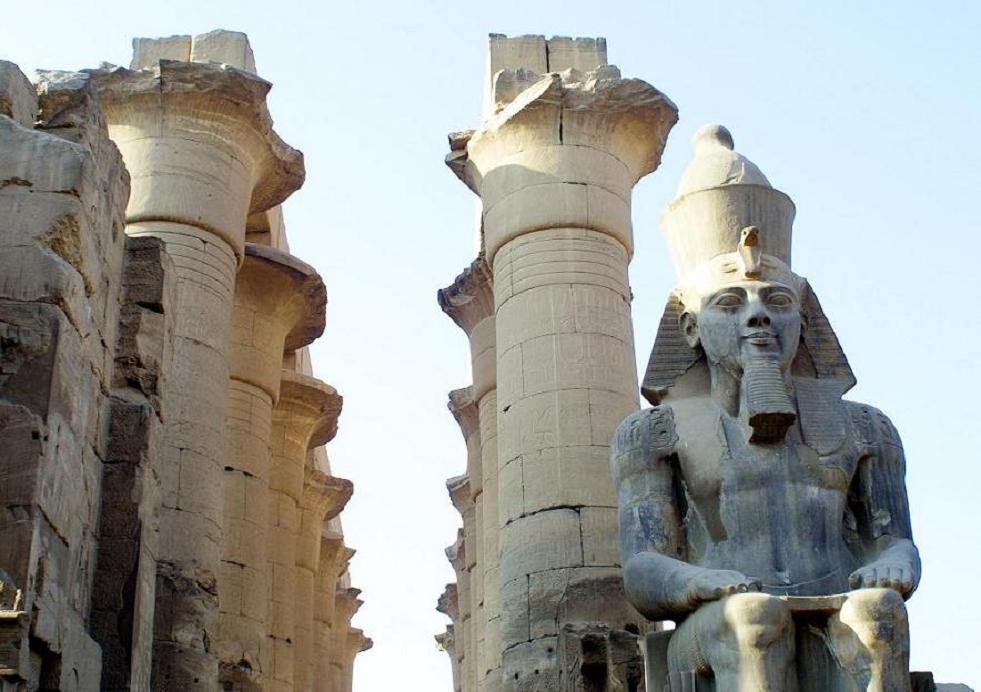Nile Cruise Itinerary –Exploring the Best of Egypt’s Ancient Temples
For most, Egypt has been on a bucket list for a very long time. Who can resist the temptation of visiting the great Pyramids of Giza or the Sphinx? But a Nile cruise itinerary is a must if you want to see more than the attractions in Cairo and the temple of Abu Simbel in southern Egypt. This article will highlight the best temples along the Nile River and why they are treasured.
Warning - This is a long post.
Weaving its way between Cairo and Aswan, the river Nile represents the lifeblood that has connected these civilizations through the sands of time. Along its riverbanks lie the Luxor, Edfu, and Kom Ombo communities, which are home to some of the most remarkable Egyptian temples. Karnak, Luxor, and Kom Ombo temples have incredible stories transcending through the ages. A 5-day cruise on the Nile will transport you through time as you explore what life was like as ancient Egypt evolved.
Are there different Nile cruise itineraries?
Once you have decided that a Nile cruise will be part of your Egypt travel itinerary, several options exist. Most Nile cruises are either five days and four nights or four days and three nights. The cruises go southbound from Luxor to Aswan or northbound from Aswan to Luxor. Either way is acceptable as the historic and architecturally significant ancient Egyptian sites can be visited in either direction.
There are longer itineraries available, but I suggest only those if you have more time. The difference between longer and shorter cruises is the number of sites you visit daily.
Which direction should I go?
Deciding which direction to take your Nile cruise is entirely up to you. First, you must choose how the Nile cruise fits into your overall Egyptian travel itinerary. In most cases, people travel from Cairo to Luxor or Aswan by overnight train to begin their Nile cruise. If you are short on time, you can fly to either city. But if you have the time, the overnight train is a must-do Egyptian Experience.
On my 5-day Nile cruise in April 2022, we were part of an experiment that had the entire journey go round trip from Luxor down to Aswan and back. Essentially, we saw all the sites in Edfu, Kom Ombo, and Aswan in the southbound direction. As our cruise started in Luxor, we visited half the sites on the first day, while the other half on the last day. This unusual Nile cruise itinerary meant we had a “sea day from Aswan to Luxor,” which was very relaxing.
When doing your Google search to select your itinerary, see if this round-trip option is available. Having a sea day will make you feel like you are cruising the Nile as people did centuries ago. Watching the children play on the riverbanks or the farmers tend to the fields incorporates a realistic view of earlier times.
RELATED: Here are some tips on How To Plan Your First Trip to Egypt.
What Ancient Sites Are Visited on a Nile cruise?
Since Luxor (known as Thebes) was originally the capital of Egypt, it is home to some of the oldest and most important burial sites in the Egyptian civilization. Known as the Valley of the Kings, this area lies on the west side of the Nile. This Valley hosts the tombs of some of Egypt’s most important Kings and Pharaohs. Due to their value to the Egyptian people, large elaborate tombs were created at the time of their death. Taking up residence here in the Valley are the tombs of King Tut, Ramses II, and Queen Hatshepsut. Within the Valley, there are a total of 69 tombs carved into the sandstone mountains, of which only 63 have been discovered.
Keep reading to discover what ancient Egyptian temples are explored on a Nile cruise itinerary and how your daily tour schedule might look.
If you took the overnight train from Cairo to Luxor, you would arrive in Luxor around 7:00 AM. From the train station, you are transported to Luxor’s cruise port on the Nile, where you will leave your luggage onboard and start your cruise/tour.
DAY 1 – Luxor
With your luggage safely stowed, your first day of touring usually begins with a visit to the Valley of the Kings, the Mortuary Temple of Hatshepsut, the Colossi of Memnon, and possibly an alabaster factory. These ancient historic sites provide plenty of information about who the famous Egyptians were and why they are significant to the ancient Egyptian civilization.
1. Valley of The Kings
On this first day of your tour, your trip to the Valley of the Kings will have you arriving at the visitor center within about a 20-minute drive. The visitor center is a sleek and modern building that showcases the locations of the discovered tombs. Many of the tombs were robbed at one point but what remains is still worth seeing.
A 3-dimensional model gives you a better understanding of the overall depths of the tombs and the intricate tunnels created to attain entrance to them. Your ticket for this attraction usually gives you access to three of the eight publicly open tombs, including Ramesses I, Ramesses III, Ramesses VII, Ramesses IX, Seti I, Siptah, Merenpath, and Tausert-Setnakht. For an additional fee, you can visit the tomb of Tutankhamen, the most famous king buried here.
A small tram takes you to the burial sites and tombs from the visitor center about one kilometer away. From there, you will select the three tombs you want to enter.
Check out this article for more information on the tombs in the Valley of the Kings.
After about 90 minutes at this site, you will board your bus and head towards the next area, which is usually the Mortuary Temple of Queen Hatshepsut.
2. Mortuary Temple of Queen Hatshepsut
Following your visit to the Valley of the Kings, most Nile cruise tours head to the Mortuary Temple of Hatshepsut. Queen Hatshepsut was one of Egypt’s rare female rulers, and in 1478BC, she became the first Egyptian female pharaoh.
Queen Hatshepsut was declared regent by marriage and, as such, ascended to the throne. With this new title, Hatshepsut was granted all the powers and attitudes that came with such a position. Some believed that she was closer to the gods because she was female, so she did not try to disguise her gender. Others believed that she could not be shown as a ruler. She accepted this controversy and portrayed herself as a male monarch. Ancient Egypt Online has an excellent summary for more information on her family history.
Throughout her 22-year reign, Hatshepsut erected the Mortuary Temple at Deir el Bahari, enlarged Egypt’s commerce, and extended the temple complex at Karnak. She never missed a chance to establish and maintain her power. Hatshepsut was one of the most productive builders of ancient Egypt and was the inspiration behind some of the most prominent obelisks ever constructed. To commemorate 16 years as a pharaoh, she ordered the building of two massive obelisks. Unfortunately, one cracked and can be seen in a quarry in Aswan (The Unfinished Obelisk).
The temple you will visit on your Nile cruise itinerary is Hatshepsut’s burial place. As striking as it is from the road, it is equally magnificent inside. Although this is a re-constructed temple, many drawings are still colored and depict stories of Egypt’s past. (The temple was damaged following her death). The stop here usually lasts about 40 minutes, enough time to view the architecture and carvings.
AD - You might be interested in this Egypt Trip Planning Checklist to help you plan your trip to Egypt.
3. Colossi of Memnon
Also located within this general area west of Luxor is the Colossi of Memnon. These are two giant statues, each measuring 60 feet tall, standing at the entrance to Amenhotep III’s mortuary temple. Made from quartzite sandstone, these statues were meant to protect the pharaoh’s temple from evil. Unfortunately, the temple was destroyed by an earthquake in 27BC, and now only the statues remain.
It is said that in February and March, the statues “sing” an hour or two before sunrise. This legend, known as the “vocal Memnon,” was believed to bring good luck to those that heard the sound. Visitors outside Egypt were attracted to this site in search of a blessing. To this day, there is no explanation for why sounds are heard at this site.
Although there is no temple to visit, your stop here will allow you the chance to experience this unusual phenomenon. The stop is only about 15 minutes long but well worth getting out of the bus.
LUXOR IS KNOWN FOR ITS ALABASTER
Depending on the timing and interest of your group, a stop at an alabaster factory within the Valley may be included in your itinerary. Luxor is a well-known supplier of alabaster due to its quality and is prized due to its translucence and the effect of the light passing through the soft stone. It comes in three colors dark green, tannish-yellow, and white.
One of the more visitor-friendly factories is run by the Morssey family. Here you will be entertained by the artisans as they demonstrate the different methods of carving the stone into various art pieces. You will be shown the difference between hand-made and manufactured products at the factory. There is a small shop on-site for you to purchase works of art. Although the salespeople are present, they are not as aggressive as in many other market areas. The stop here is usually about 30 to 45 minutes.
From there, you will head back to your river cruise boat and start your cruise itinerary on the Nile.
SPEND THE AFTERNOON CRUISING THE NILE
Once everyone has returned to the cruise ship after they visited the Valley of the Kings and other key locations on the west bank of the Nile, you will begin your journey along the river of time through the center of Egypt. While gently cruising this palm-tree-lined narrow river, you will pass numerous small villages and farms. Many locals can be seen fishing, tending to their livestock, or working rice fields. You may see water buffalo wading along the riverbanks if you are lucky.
This experience will allow you to sense what it may have been like to cruise the Nile centuries ago. It is very peaceful and, in some areas, relatively primitive.
Onboard the boat, you will have plenty of time to add a dip in the pool, a drink at the bar, or a nap into your itinerary. Imagine feeling relaxed as you sip a cocktail while watching the riverbanks come to life with the local resident going about their daily duties.
One of the towns along the way is Esna, where the cruise ship will have to go through a set of locks. Depending on the time of day, viewing from atop the ship is a great option.
DAY 2 – Edfu-Kom Ombo
4. Temple of Horus at Edfu
After spending your first night on your Nile cruise, your itinerary will have you docked in Edfu. Here, you will spend the morning visiting the Temple of Horus, the second largest temple in Egypt. This temple was discovered by a French archeologist named Auguste Mariette as it was uncovered from its sand burial in the 1860s.
It is interesting to note that transportation to this temple is done by horse carriage. As complicated as it sounds due to the many tourists, this local feature is very well organized and moves like clockwork. This tradition adds tremendous authenticity to the Egyptian experience.
The temple took almost 180 years to complete and is an excellent example of traditional Egyptian elements mixed with Greek influences. There is the main entrance, a courtyard, and a chapel. The temple’s most striking feature is the massive towers at its entrance. At 118 feet high, they are decorated with battle scenes of King Ptolemy VIII defeating his enemies for Horus.
Inside the entrance, you are flanked by massive pillars adorned with carvings that line the perimeter of an open courtyard. Many other chapels and chambers are worth exploring within the temple complex.
The tour stop here is usually about 2 hours, including a 20-minute discussion from your tour guide about the temple’s history. There is a local market on-site, but the vendors are aggressive and should be passed by. Your carriage will return you to the ship where you will spend the afternoon cruising the Nile, with the next stop being Kom Ombo later in the day.
5. Temple of Kom Ombo
On many Nile cruise itineraries, the visit to Kom Ombo is done in the evening. This temple is unique as it was built on an outcrop at a bend in the Nile. It is spectacular to visit at night as the pillars and chambers give way to a genuine experience when lit up.
Dedicated to the crocodile god Sobek and the falcon god Horus, the Temple of Kom Ombo has two identical entrances, hypostyle halls, and sanctuaries. This represents the mythical link between the two gods. In ancient times, Egyptian priests placed great importance on the crocodile, and as this location attracted these creatures, mummified crocodiles were plentiful at this temple. Today, a crocodile museum adjacent to the temple at Kom Ombo is worth the visit.
At one point, the temple was converted into a Coptic church, but unfortunately, many of the etchings were defaced. Eventually, the temple was harvested for building materials, which is in an advanced state of ruin. More information about the temple can be found here.
DAY 3 – Aswan
6. Temple of Abu Simbel
You will cruise a short distance to Aswan during the night, where you will dock for two nights. Upon arrival, you will either spend some time onboard the ship, explore Aswan on your own or take a day trip to Abu Simbel. If you take the journey, you will return to Aswan by mid-afternoon.
The temple of Abu Simbel is particularly unique as it is a large temple complex celebrating Ramses II and his wife, Nefertari. Ramses II believed he was a god and deserved recognition as one.
This temple is also important as it was relocated when the Aswan High Dam was constructed in the 1960s. For more information on the temple at Abu Simbel and why this is a recommended day trip from Aswan, see my related post entitled – Day trip to Abu Simbel – The Greatest Temple Near Aswan You Need to See.
SPENDING THE AFTERNOON IN ASWAN
Following a day trip to Abu Simbel, your tour itinerary will likely stop at the Aswan High Dam. Although it is not an inside tour, leaving the bus is worth viewing the differences on either side of the dam. A small information kiosk is set up demonstrating the dam’s construction.
Spending the afternoon in Aswan is an enjoyable experience. Compared to Luxor or Cairo, Aswan is a more modern city that looks cleaner. If you have the time, have your tour guide plan a visit to a Spice market as Aswan is known throughout Egypt for its spices.
As Aswan is located on a widening of the Nile, a fantastic afternoon activity would be a ride in a felucca. A felucca is a traditionally styled sailboat that cruises around some of the small islands in Aswan. The boat holds about 20 people and is a relaxing journey that takes about an hour. Another optional activity would be a visit to a Nubian village to experience the way of life of the Nubian people, who were the original inhabitants of Egypt in this region.
AFTER A GOOD NIGHT’S SLEEP
DAY 4 – Aswan – Sailing back to Luxor
7. Philae Temple Complex
Following your second night in Aswan, your Nile cruise itinerary will likely have you visiting the Philae Temple Complex first thing in the morning. From your cruise ship, you will be taken to a different part of the riverbank, where you will board a small, motorized boat to take you to the temple on an island. The short 5-minute trip is well organized and efficient.

The Philae temple complex was initially located on Philae Island in a bay of the Nile and is believed to be one of the burial places of the Egyptian god Osiris. This island was considered sacred to his wife, Isis, so the Temple of Isis was built on the island. However, when the Aswan Low dam was built in 1902, the temple became flooded most of the year. Many bricks became encrusted with river silt, and the colors began to wash away. When the plans for the Aswan High Dam were revealed in the 1960s, it became clear that this temple and the entire island would submerge when the dam was completed.
As a result, the bricks of the Philae temple complex were moved by hand and re-constructed on Agilkia Island before the construction of the Aswan High dam. This temple complex consists of the Temple of Isis and Nectanebo’s Kiosk, the Temple of Hathor, and Trajan’s Kiosk. Here is an excellent article for more information about the site located at the Philae complex. The stop here is about 90 minutes.
UNFINISHED OBELISK IN ASWAN
By the time you have finished your tour of the Philae Temple complex, your guide will likely take you to the quarry in Aswan to view the Unfinished Obelisk. As mentioned previously, Queen Hatshepsut thought so highly of herself that she wanted to have several obelisks created in her honor. This site in Aswan contains the largest but it unfortunately broke during its removal from the earth. Its remains are preserved at this guarded site for tourists to view.
A visit to this site illustrates the size of these stone monuments and how their removal from the earth must have been a difficult task. They are enormous. There stop here is relatively short around 30 minutes.
CRUISING THE NILE LIKE ANCIENT DAYS
Now that you have seen most of the major tourist sites in Aswan, you will return to your Nile Cruise ship and start the journey back to Luxor. For this round-trip itinerary, we spent the afternoon and night having a “sea” day aboard our boat, and this was one of the most relaxing days on the cruise itinerary.
Day 5 – Luxor
Following a relaxing day and peaceful evening aboard our boat, we awoke back in Luxor for an additional day of touring the sites. This day’s itinerary had us visiting the ancient sites on the east side of the Nile after leaving our cruise ship at the port.
For those interested, there is an optional sunrise hot air balloon ride over the Valley of the kings, which is well worth the trip. If you would like more information about this excursion, check out my post: Luxor balloon Flight post: Is it worth the Hype?
8. Karnak Temple Complex
The Karnak Temple complex is the largest and most extensive historical site in Egypt and perhaps the world. This complex consists of several temples, chapels, and other buildings in the form of a village. In Arabic, Karnak means “fortified village.” There are three main sections dedicated to different gods:
Amun-Ra (a combination of the Old Kingdom god Amun and the Sun god Ra)
Mut (the mother goddess and consort of Amun)
Montu (a falcon-headed god of War)
The most striking feature of this complex is the Hypostyle Hall which contains 134 columns. Just outside this hall lies one of two obelisks that Queen Hatshepsut had erected in her honor. Although this temple was a center of the ancient faith, it also served as a palace for the pharaohs. Throughout 1500 years, it was added to several times, thus creating an incredible collection of temples, sanctuaries, pylons, and other decorations. This article is a good read for detailed information about the history and significance of the Karnack temple complex.
Suppose you are visiting Karnack as part of a Nile cruise itinerary. If that is the case, your tour guide will spend about 30 minutes with you identifying some of the striking and significant features of the complex. You will usually spend about 2.5 hours here as there are so many features to explore. There is even a small coffee shop to grab a coffee or ice cream while you take a break from the sun.
SOUND AND LIGHT SHOW IS WORTH THE OPTIONAL TICKET
It is interesting to note that there is a Sound and Light Show offered at this temple several times a night, and as part of a tour, you will likely have the option to visit. This show is worth the extra fee, and it is surprising to see how different this temple looks under the lights. If not on a tour, be sure to consult their website for show times and ticket information.
9. Luxor Temple
At some point during your tour of the Karnack temple, you would have been told about the Luxor temple. Since Luxor (Thebes) was formerly the capital of Egypt, this temple was constructed by some of the most important pharaohs, including Amenhotep III and Ramesses II. Later, Tutankhamun, Alexander the Great, and the Romans made additions to this temple.
Luxor Temple was considered an important religious center for the ancient Egyptians and has been active as a religious site for at least 3,000 years. Romans, Greeks, Christians, and Muslims also played a role in the religion of the temple. In the 13th Century, Muslims built a mosque over the church, which is still in use today.
AVENUE OF THE SPHYNX
It is noteworthy that the Luxor temple is in a north-south direction, facing the Karnack Temple. The road connecting the two was lined with a series of 1,350 sphinxes. Once a year, during the Opet Festival, the Egyptians paraded along this road carrying statues of Amun and Mut in a symbolic re-enactment of their marriage. At Luxor Temple, Amun was magically transformed into the god of fertility.
Over the years, the Luxor Temple and the Avenue of the Sphynx became buried with sand but were later discovered in the early 1800s. Of significance at this time was also the discovery of the Rosetta stone, which led scholars to be able to read the hieroglyphic inscriptions at Luxor Temple.
On your itinerary stop at the Luxor temple; you will appreciate not only the size of the temple complex but also the preservation of the carvings and artifacts. Your tour guide will spend about 20 minutes highlighting some of the symbolism before you are left on your own to explore. Sixty minutes is plenty of time at this site.
Ending Your Nile Cruise Itinerary
For some people, your Nile cruise will end after visiting the two temples in the morning. You will either fly back to Cairo or wait for the next train. Either way, you will have journeyed through time as you explored some of the most beautiful ancient Egyptian temples.
For others, you may head to a hotel in Luxor to spend the afternoon relaxing by the pool or watching the boats sail by on the Nile. In the evening, you may head over to the Sound and Light show at Karnak Temple or take a carriage ride to the Night Markets in Old Luxor.
Whatever you decide to do, I think you will agree that a 5-day Nile cruise itinerary is the best way to explore Egypt’s ancient temples. It allows you to travel through time and explore the ruins of a long-lost civilization that became the foundation of what Egypt is today. This is a MUST-DO experience and should be included when planning your trip to Egypt!
Are you ready to include a Nile cruise itinerary into your Egypt travel plans?
Random Questions About the Cruise
What is the cruise ship like?
Although the Nile cruise is classified as a cruise, it is not like a traditional cruise with thousands of people, and it could best be compared to a river cruise in many European countries. The cruise ships themselves are relatively small, with about 60 cabins for 120 passengers.
Some variations depend on the cruise line and the luxury level of the cruise. The staff ratio is usually about double the number of passengers. Despite these variations, the boats themselves are all about the same length. When these ships dock in the ports, there are usually 4 or 5 tied in parallel, so passengers on the outer boats must go through the other ships to get to the shore. Having them all the same, the length makes this task easier.
What are the Cabins like?
The cabins onboard also vary slightly with the level of luxury. I traveled on the M/S Nile Carnival, considered a mid-level cruise ship. Most cabins are average size, with a large picture window to view the scenery and an efficient bathroom with a shower. Some ships will have cabins with small balconies. On my cruise, we were upgraded to one of the four suites and had the added luxury of a separate living room, dining room, and full bathroom with tub and shower.
Is there a pool or other amenities?
On the upper deck of all river cruisers on the Nile, there is at least one pool, a bar, and a shaded dining section. Some of the more luxurious cruises have private lounge cabanas surrounding the pool. Inside is a dining room, a bar, and sometimes a small gym. On certain nights of the cruise, organized activities or shows may be available in the bar areas.
What is the Food Like?
I cannot speak to the other Nile cruise ships, but the food was quite pleasant on our boat. The dining room had a buffet-style service for all meals. Lunch and dinner had a similar variety of food, including a salad bar, a dessert bar, and a hot meal service. Food included rice, chicken, beef, fish, and vegetarian dishes. Due to COVID, plexiglass is present, and the plates are held through a window where the servers fill your plates as you desire.
What is included in the price?
On most Nile cruise Itineraries, all meals are included in the price. Depending on your level of luxury, you may have an all-inclusive package, or you may have to pay for drinks other than water or coffee.
Do I need Insurance?
You should always have travel insurance when you leave your home country. When traveling to Egypt, it is even more important to have insurance since Egypt has experienced unrest and political issues in the past. Should such incidents occur, you want to be well-prepared to change your plans. Furthermore, travel medical insurance is of great value since COVID-19 is still circulating around the world, and restrictions, quarantine, and entry rules are constantly changing. I would recommend Visitor’s Coverage to keep you well protected.
For other Egypt travel tips, see this post: Top 8 Egypt Travel Tips You Should Know.
Free Subscribers:
If you are looking for Egypt trip planning checklists and trackers, I have these available through my online store.
Paid Subscribers:
These products are FREE on my Digital Products Page.




